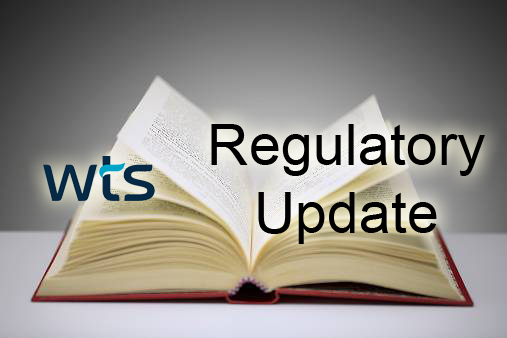Many states’ waste programs classify solid waste as solely hazardous or nonhazardous per the regulations found in 40 CFR; however, some states including Texas have more complex and stringent nonhazardous waste classification programs based on the type of industry generating the waste and the hazards to human health or the environment the waste may contain.
Nonhazardous waste generated, transported, stored, managed or disposed of in Texas must be further classified per the guidance found in the Texas Administrative Code (TAC), Title 30, Chapter 335, Subchapter R (Waste Classification). It is very important to note that generators from outside of Texas that ship to facilities in Texas need to follow these regulations as well.
Nonhazardous wastes in Texas are classified as either industrial or nonindustrial. Industrial wastes result from operations of industry, manufacturing, mining or agriculture. Nonindustrial wastes originate from sources such as schools, hospitals, and churches.
If a generator determines that their operation is industrial, then all their nonhazardous wastes are deemed industrial wastes and must be further classified as Class 1, Class 2 or Class 3.
Class 1 Waste Determination (30 TAC 335.505)
Class 1 waste is considered potentially threatening to human health and the environment if not properly managed. There are special handling requirements for Class 1 wastes, and these wastes must be disposed of in landfills permitted to receive hazardous and Class 1 wastes. Class 1 wastes must be manifested on a Hazardous Waste Manifest and reported to the Texas Commission on Environmental Quality (TCEQ) via the State of Texas Environmental Electronic Reporting System (STEERS).
Class 1 waste:
- Contains constituent(s) of concern which equal or exceed the levels listed in the table found in 30 TAC 335.521(a)(1), titled Constituents of Concern and Their Maximum Leachable Concentrations.
- Is a liquid with a flash point between 140° and 150°F.
- Is a physical solid or semi-solid under normal conditions of storage, transport and disposal, which is capable of causing fires through friction, or retained heat from manufacturing or processing, or which can be ignited readily, and when ignited burns both vigorously and persistently such that it creates a serious hazard. A list of examples can be found in 30 TAC 335,521(a)(2), titled Examples of Ignitable Solids.
- Is a solid or semi-solid that when mixed with water (1:1) produces a solution having a pH less than or equal to 2 or greater than or equal to 12.5.
- Is a waste which contains total recoverable cyanides greater than or equal to 20 ppm.
- It is Class 1 waste if there is an absence of analytical data and/or documented process knowledge which proves a Class 2 or Class 3.
- It is listed as a Class 1 waste in 30 TAC 335.508.
- RACM (regulated asbestos-containing materials)
- Empty containers with a capacity greater than 5 gallons last containing a CERCLA hazardous substance, a hazardous waste, or a Class 1 waste.
- Waste or contaminated media containing Polychlorinated biphenyls (PCBs) at a level greater than or equal to 50 ppm.
- Petroleum wastes with a total petroleum hydrocarbon (TPH) concentration greater than 1500 ppm.
- TSCA “new chemical substances.”
- Out of state waste that does not meet Class 2 or 3 criteria AND has not been approved as Class 2 or 3 waste by the executive director. This includes all nonhazardous industrial solid waste transported into or through Texas for processing, storage, or disposal.
Class 2 Waste Determination (30 TAC 335.506)
Simply put, Class 2 wastes are nonhazardous industrial wastes that are determined neither to be Class 1 nor Class 3. Class 2 wastes include, but are not limited to:
- Empty containers with a capacity of less than or equal to 5 gallons which last contained a CERCLA hazardous substance, hazardous waste or Class 1 waste.
- Empty containers greater than 5 gallons which last contained a CERCLA hazardous substance, hazardous waste or Class 1 waste if the residue is removed through triple-rinsing (with a solvent capable of removing the residue), hydroblasting, or other methods which remove the residue, AND
- container has been rendered unusable (crushed, punctured, etc.) OR
- the container is being recycled.
- Empty aerosol cans (inner pressure equals atmospheric pressure).
- Plant trash (paper, cardboard, food wastes, and general plant trash only). Does not include oils, lubricants, oil filters, contaminated soils, sludges, wastewaters, or bulk liquids.
- Medical wastes.
- Petroleum wastes with TPH less than or equal to 1500 ppm.
Class 3 Waste Determination (30 TAC 335.507)
Class 3 wastes include materials that are essentially insoluble, do not react with other materials, do not decompose (e.g., brick, rock, glass, dirt), and pose no threat to human health or the environment. Class 2 and 3 wastes are often accepted by municipal landfills. Due to the nature of the waste, these landfills do not need to meet the security and permitting requirements of a hazardous/Class 1 landfill, and disposal costs are generally less.
RG-022
The TCEQ published Guidelines for the Classification and Coding of Industrial and Hazardous Waste, or RG-022. This checklist walks generators through several relatively simple yes/no questions to properly classify waste.
Part I helps determine if a waste is hazardous, either because it is listed (F-, K-, P-, or U-Codes) or characteristic (D-Codes). The section of the CFR that pertains to each part of each question is given for ease of reference.
If a generator answers ‘no’ to all parts of the questions in Part I AND the generator is INDUSTRIAL, then Part II of the checklist should be completed to further classify the waste as Class 1, 2 or 3. Pertinent sections of 30 TAC 335 are given for each question.
RG-022 also explains Texas waste codes, TCEQ waste notification requirements and forms, and how to access STEERS.

